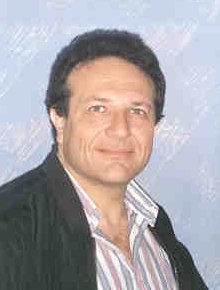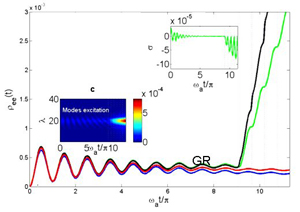Scientists have made a startling prediction about the quantum world that seems to show that simply taking the temperature of certain types of quantum systems at frequent intervals causes such systems to break one of the hard and fast rules of thermodynamics.
Anyone who has dabbled in quantum mechanics will know just how slippery is the atomic and sub-atomic world of probability wave-functions where particles eddy and swirl like waves.

Gershon Kurizki
One of the underlying rules of the quantum world is the Time-Energy Uncertainty Principle. Wrapped up in this apparently simple phrase is the notion that it is impossible to know both the precise duration of any process and its exact energy cost in an atomic or subatomic particle with 100 % certainty; the very act of observing one or the other somehow disturbing the counterpart property.
The quantum world is spooky, to say the least.

Quantum systems run hot and cold when you take their temperature regularly (Credit: Gershon Kurizki)
Now, the laws of thermodynamics are apparently irrefutable, after all they allow sceptics to see straight through the claims of those inventors who claim perpetual motion machines, they allow us to build power stations, and ultimately they will take us to the ends of the universe.
One law reveals that the interaction between a large heat source and a cluster of smaller systems will, on average, move progressively towards thermal equilibrium – hot moves to cold to even out the temperature, in other words; this is the so-called zero’th law of thermodynamics. But, it ain’t necessarily so in the quantum world claim Weizmann chemists Gershon Kurizki, Noam Erez and Goren Gordon of the Weizmann Institute in Rehovot, Israel, working with Mathias Nest of Potsdam University, Germany. They have shown that an ensemble of quantum systems in thermal contact with a large heat source could buck this thermodynamic trend.
Their predictions suggest that such a quantum ensemble could actually heat up even if it is hotter than a neighbouring large heat source or if it is colder, it could get colder still, but only under certain conditions. The scientists showed that if the energy of these systems is measured repeatedly, both systems and large heat source will undergo a temperature increase or decrease, and this change depends only on the rate of measurement, not on the results of the measurements themselves.
In the classical world, a thermometer does not interfere with the laws of thermodynamics no matter how hot or cold a system nor how often the thermometer is read, but taking the temperature of a quantum system somehow decouples it from the neighbouring heat source. This decoupling, followed by recoupling of the two when measurement ceases, introduces energy (at the expense of the measuring apparatus) into the systems and the heat source alike, and so heats them up. Depending on whether the measurements are repeated at short or long intervals, it should be possible to heat up or cool down the systems.
The predicted effects may be the key to developing novel heating and cooling schemes for microscopic solid-state devices, such as quantum computer chips or in allowing ultrafast temperature control for fast optical measurements in the chemistry laboratory.
Further reading
Nature, 2008, 452, 724-727
http://dx.doi.org/10.1038/nature06873
Weizmann Institute Quantum Optics Group homepage
http://www.weizmann.ac.il/chemphys/gershon/
Mathias Nest homepage
http://tcb16.chem.uni-potsdam.de/nest/
Suggested searches
thermodynamics
quantum mechanics